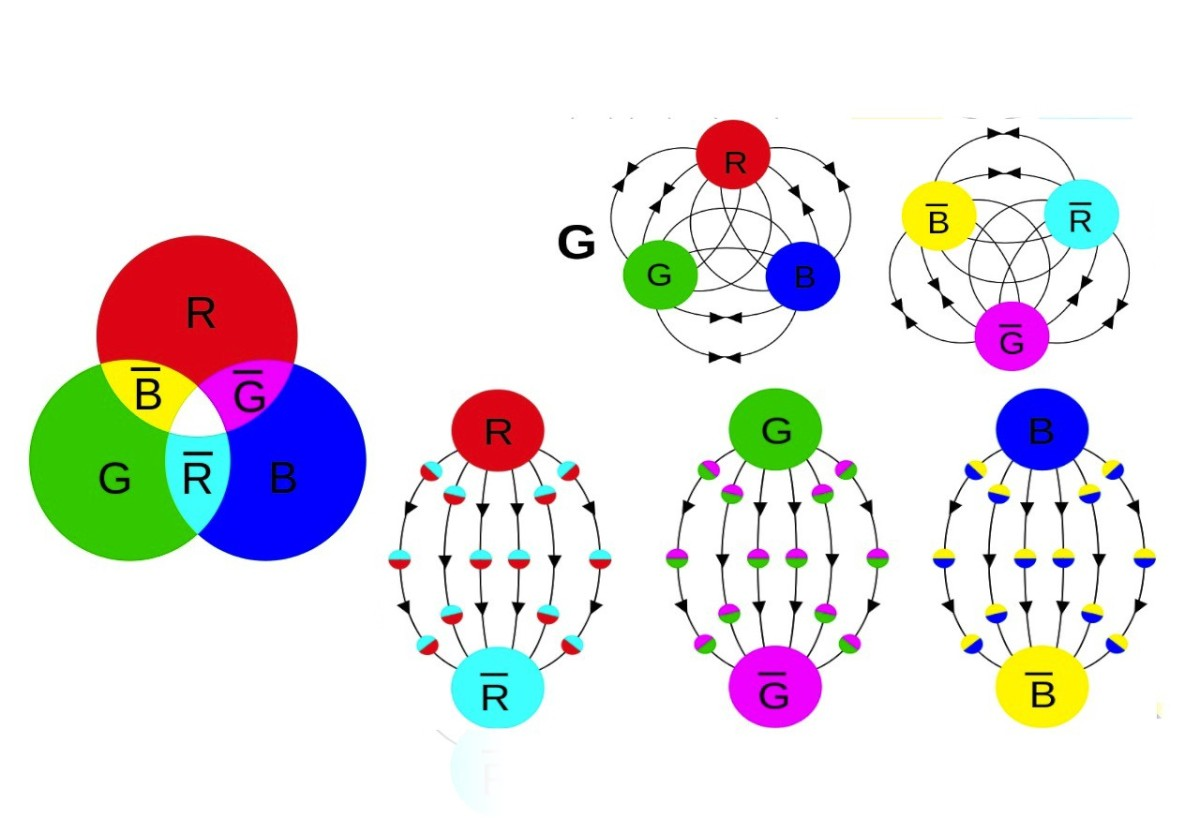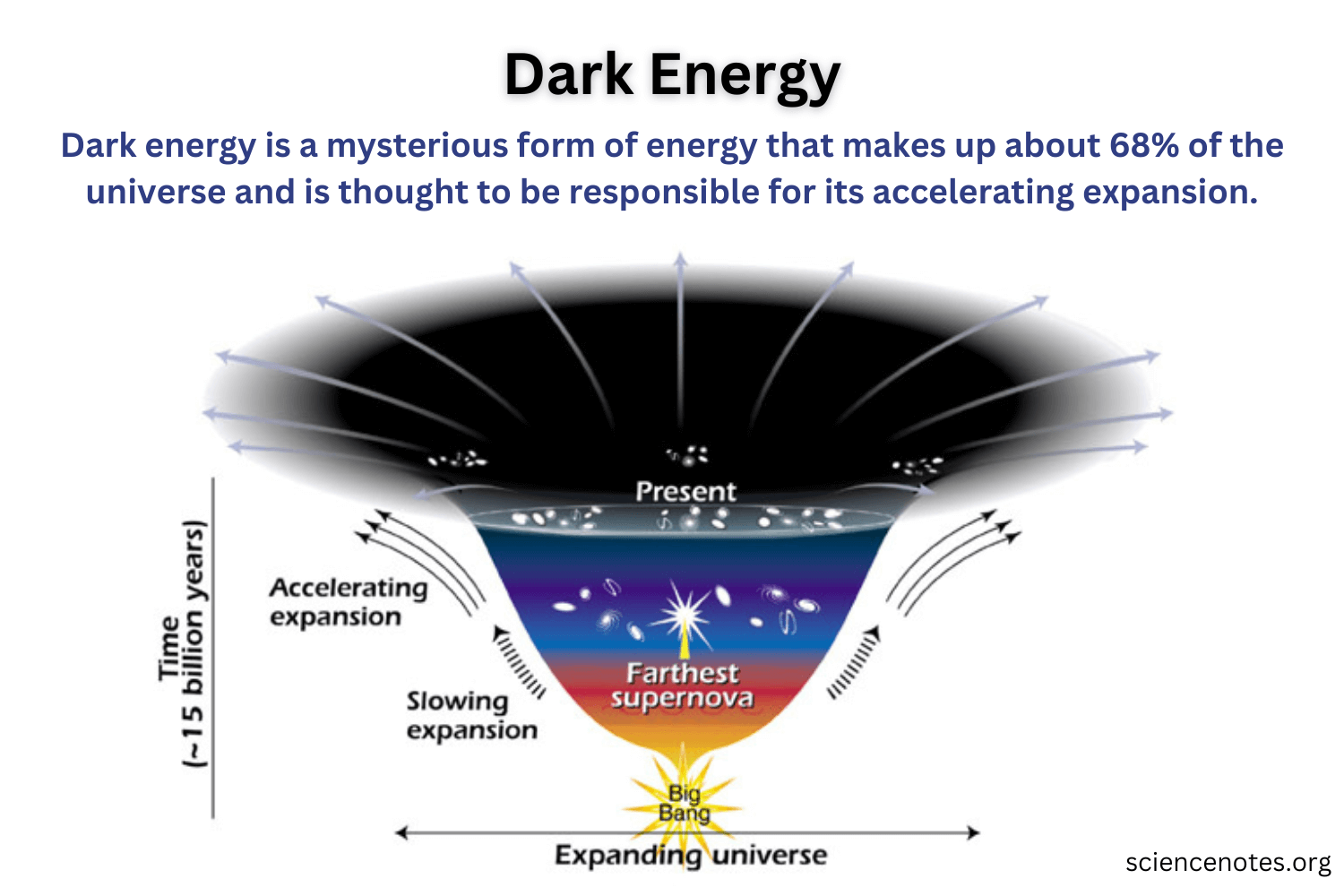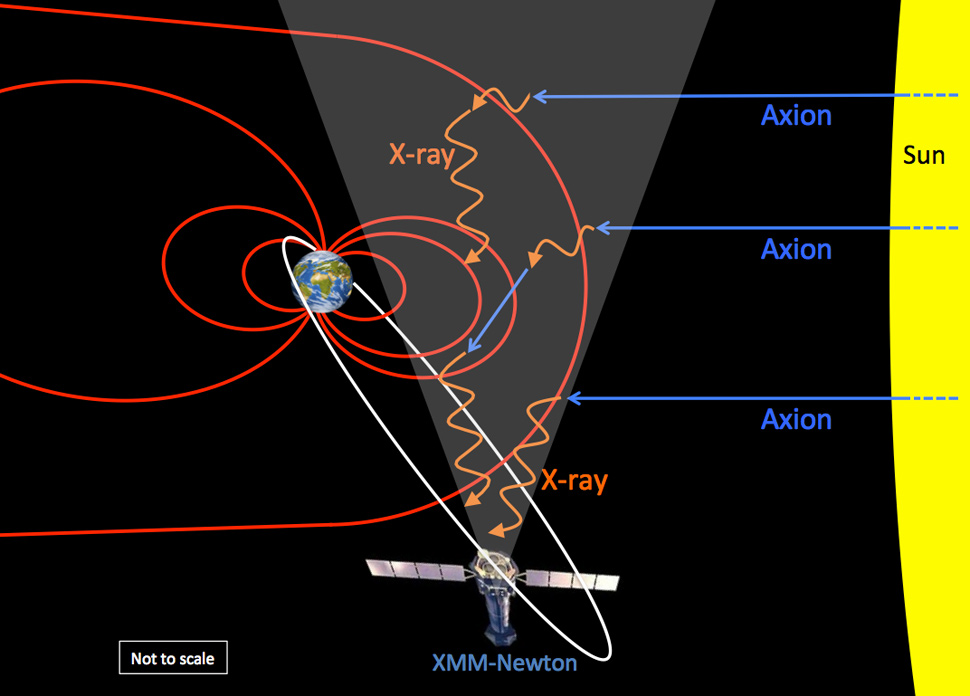
Axions: A Breakthrough in Dark Matter Research and Physics
Axions, elusive particles proposed as a component of dark matter, are making waves in the realms of particle physics and cosmology. For decades, these theoretical particles have been central to understanding the mysterious substance that accounts for most of the universe’s mass, yet they remain unseen. Recent advancements in research have utilized unique quantum materials to build a bridge for discovering axions, enhancing our comprehension of the universe’s makeup. The latest experiments signal a thrilling potential to capture signs of axions through the intricate dynamics of quasiparticles, which act as indirect detectors. By honing in on axions, scientists are not only unraveling the enigma of dark matter but also paving the way for innovative technologies in the future.
The search for fundamental components of the universe has long puzzled scientists, particularly with respect to hypothetical entities known as axions. These particles are thought to play a crucial role in explaining dark matter, an unseen force that shapes the cosmos. By employing advanced quantum systems, researchers are developing innovative methods that could illuminate the existence of these mysterious particles. With each breakthrough experiment, the role of quasiparticles is becoming increasingly significant in this scientific quest. Ultimately, understanding axions might unlock answers to the complex questions surrounding the very fabric of our universe.
Unveiling Axions: A Key to Dark Matter
Axions are theoretical particles that could play a crucial role in understanding dark matter, the enigmatic substance that is believed to account for approximately 85% of the universe’s total mass. Despite their elusive nature, researchers are coming closer to identifying these particles through advanced experimental techniques. The recent work conducted by teams from Harvard and King’s College London marks a significant leap in the search for axions, enhancing our grip on cosmology and particle physics. By using quasiparticles as proxies for axions, scientists are moving beyond theoretical speculation and beginning to explore tangible detection methods that could validate the existence of these missing elements of the universe.
The quest to confirm axions’ presence has implications that reach far beyond particle physics. If validated, axions may help craft a comprehensive framework for understanding the origins and evolution of the cosmos. By harnessing materials with unique electronic properties like manganese bismuth telluride, researchers have created an experimental landscape ripe for discovering dark matter signatures. This innovative approach not only illuminates the path toward detection of axions but also could yield new quantum technologies that push the boundaries of what we know about matter and energy in our universe.
Quasiparticles: The Bridge to Discovering Axions
Quasiparticles, intricate excitations arising within materials, have emerged as a formidable tool in the search for axions, acting like ghostly stand-ins for the elusive particles themselves. In the groundbreaking study from Harvard and King’s College London, researchers employed these excitations within a finely crafted two-dimensional structure of manganese bismuth telluride. By leveraging their properties, scientists aim to translate vague theoretical principles into observable phenomena, enhancing our understanding of not just axions, but broader aspects of condensed matter physics.
The manipulation of quasiparticles in this research underscores their vital role in advancing exploration in both cosmology and material science. As axion quasiparticles interact with dark matter-like conditions, they allow physicists to observe otherwise hidden interactions, potentially unveiling vital signals that could confirm the existence of axions. Such findings not only contribute to our grasp of dark matter but also unlock new frontiers in technology, paving the way for innovative applications derived from quantum materials.
Manganese Bismuth Telluride: A Quiet Giant for Research
Manganese bismuth telluride has proven to be a potent material in the search for dark matter due to its exceptional electronic and magnetic characteristics. This compound has been carefully engineered into a two-dimensional setting, creating a unique platform conducive for the emergence and study of axion quasiparticles. Researchers spent years perfecting the synthetic conditions to ensure the material’s integrity, as its air-sensitive properties pose challenges for manipulation at nanoscale levels.
The significance of this material lies in its dual role: not only does it facilitate the exploration of axions, but it also enhances the understanding of quantum mechanics and condensed matter physics. By uncovering new aspects of manganese bismuth telluride, such as its response to axion interactions, researchers could set a foundation for developing next-generation technologies that leverage quantum effects, further bridging the gap between fundamental research and practical applications.
The Role of Lasers in Axion Detection
In the pursuit of confirming axions, lasers serve as critical tools, significantly enhancing the precision and accuracy of experimental setups. Utilizing ultrafast laser optics, researchers have managed to detect and analyze the subtle behaviors of axion quasiparticles within their carefully crafted materials. This innovative application of laser technology translates theoretical models into accessible data, allowing scientists to observe the dynamic interplay between axion particles and their environments.
Moreover, lasers enable the team to explore interactions at extremely short time scales, making them invaluable in capturing the essence of quantum materials. The fusion of laser technology and condensed-matter physics not only propels the current investigation into axions forward but also lays the groundwork for future advancements in the realm of quantum detection methods, promising exciting potential for both fundamental research and emerging technologies.
Cosmology and the Importance of Axions
The study of axions offers profound implications for cosmology, as these particles might hold the key to understanding the mysterious nature of dark matter and the universe’s formation. Current models suggest that dark matter’s enigmatic properties are crucial in shaping the cosmic structure we observe today. If axions can be confirmed, they could elucidate aspects of cosmic evolution, potentially explaining discrepancies in the behavior of galaxies and large-scale structures.
Understanding the role of axions in the universe doesn’t just enhance theoretical cosmology; it could forge connections to various fields, from astrophysics to material engineering. The integration of emerging knowledge on axions into existing theories could lead to breakthroughs in how we view the universe and the fundamental laws that govern it, ushering in a new era of interdisciplinary exploration and discovery.
Future Prospects: The Axion Quest
As researchers continue to develop their methods for detecting axions, the future prospects appear promising. The current studies are laying the groundwork for future experiments that aim to utilize refined techniques and technologies capable of probing deeper into the properties of dark matter. The interdisciplinary collaboration seen in these projects indicates a collective commitment to unveiling the mysteries surrounding axions and dark matter, driving the field forward.
With advancements in detection capabilities and continued investigation into the properties of axion quasiparticles, the scientific community is already gearing up for a new wave of discoveries. Researchers are eager to delve deeper into the physics of these particles, focusing on enhancing experimental precision. The culmination of these efforts may not only lead to the detection of dark matter but also catalyze a shift in our understanding of the universe and its fundamental components.
Interdisciplinary Approaches in Axion Research
A significant element of the success in axion research is the interdisciplinary collaboration that brings together experts from various fields, including condensed-matter physics, material chemistry, and high-energy physics. This multifaceted approach allows for the cross-pollination of ideas and techniques, enriching the understanding of axions and dark matter. By harnessing diverse expertise, researchers create innovative methodologies that can tackle complex problems, such as the detection of elusive dark matter particles.
The convergence of different scientific realms not only optimizes the exploration of axions but also ability to innovate new technologies. As teams continue to synthesize their strengths and share insights, their collective efforts may soon lead to groundbreaking advancements in quantum technologies and materials science. The future of axion research vividly illustrates the merging paths of fundamental science and practical applications, which is essential for unraveling the mysteries of our universe.
Challenges in Detecting Dark Matter
Despite the promising outlook for axion detection, numerous challenges still lie ahead. One of the main obstacles is the sheer difficulty of securing conclusive evidence for axions in an environment filled with competing signals and noise. The sensitivity required to measure potential dark matter interactions demands cutting-edge technology and precision that are not easily achievable. Researchers must navigate these complexities while pushing the boundaries of experimental capabilities in order to capture the elusive axions.
Moreover, the theoretical framework surrounding dark matter continues to evolve, prompting scientists to constantly reassess their methods and adapt to emerging insights. This dynamic landscape underscores the importance of a persistent and flexible research approach, as teams work steadfastly to develop innovative solutions. As they refine their strategies and hone their technologies, the scientific community remains hopeful that the next significant breakthrough in axion detection and dark matter understanding is just on the horizon.
The Future of Quantum Materials in Particle Physics
Quantum materials are poised to revolutionize the field of particle physics, particularly in the quest for axions. The unique properties of these materials allow researchers to explore new regimes of interaction, potentially unveiling phenomena that remain hidden in classical settings. As the properties of quantum materials become increasingly well-characterized, their applications as detectors for dark matter and other fundamental particles can sharpen the focus of experimental pursuits.
As scientists continue to investigate the relationship between quantum materials and axions, they are likely to uncover groundbreaking interactions that bridge various domains of physics. With further exploration, the integration of quantum science with particle physics may lead to a deeper understanding of the universe’s fundamental structures and open new paths for technological innovation, reinforcing the importance of axions in both theoretical and experimental science.
Frequently Asked Questions
What are axions and why are they significant in the study of dark matter?
Axions are hypothetical elementary particles proposed as a solution to the problem of dark matter in the universe. They are believed to make up a significant portion of the dark matter that constitutes about 85% of the universe’s mass. Their existence could help explain various phenomena in particle physics and cosmology, making them a key focus of modern research in these fields.
How do axion quasiparticles help in the detection of dark matter?
Axion quasiparticles, which are simulations of axion particles, assist in detecting dark matter by interacting with actual dark matter axions. When a dark matter axion strikes the material containing these quasiparticles, it causes an excitation that can be measured. This process not only confirms the presence of axions but also enhances the sensitivity of dark matter detection technologies.
What is the role of quantum materials in the research of axions?
Quantum materials, such as manganese bismuth telluride, provide unique electronic and magnetic properties that are essential for studying axions. By engineering these materials at the atomic level, researchers can create conditions conducive to the formation of axion quasiparticles. This innovation opens new pathways for exploring the nature of dark matter and developing advanced quantum technologies.
Why are axions considered a solution to major questions in particle physics and cosmology?
Axions are considered a potential solution to significant unanswered questions in particle physics and cosmology, particularly concerning the composition of dark matter and the unification of fundamental forces. Their theoretical existence complements existing frameworks and helps physicists understand the underlying structure of matter and energy in the universe.
What experimental techniques are used to study axion quasiparticles?
Researchers utilize advanced experimental techniques such as ultrafast laser optics and sophisticated measurement tools to study axion quasiparticles. By capturing the dynamics of these quasiparticles, scientists can observe their behaviors and interactions, thus providing insights into their properties and potential roles in dark matter detection.
How could the discovery of axions affect our understanding of the universe?
The discovery of axions could dramatically enhance our understanding of the universe by confirming a key component of dark matter and thereby providing answers to fundamental cosmological questions. It may lead to groundbreaking advancements in particle physics and help to unify various theories related to the fundamental forces that govern the universe.
What are the future implications of axion research for particle physics?
Future research on axions holds the potential to refine our understanding of dark matter and lead to the discovery of new particle interactions. This could benefit the overall particle physics community by providing tools and methodologies for probing the fabric of the universe, ultimately contributing to advancements in both theoretical and experimental physics.
How does the research team plan to advance their studies on axion quasiparticles?
The research team plans to further explore the properties of axion quasiparticles and improve experimental conditions for greater precision in their measurements. The goal is to develop experiments that can directly probe axion dark matter, thereby enhancing the hunt for these elusive particles and expanding our knowledge of the universe.
| Key Point | Details |
|---|---|
| Axions and Dark Matter | Axions are hypothetical particles theorized to explain dark matter, which makes up most of the universe’s mass. |
| Recent Experiment Success | A collaboration between Harvard and King’s College London led to a breakthrough in using quasiparticles to detect axions, published in *Nature*. |
| Quasiparticles as Detectors | Axion quasiparticles can be used to detect dark matter interactions at a quantum level. |
| Material Used | Researchers used manganese bismuth telluride, renowned for its electronic and magnetic properties. |
| Future Potential | These findings could lead to new dark matter detection technologies and advancements in quantum applications. |
| Interdisciplinary Approach | The research involved condensed-matter physics, material chemistry, and high-energy physics, enhancing innovation. |
Summary
Axions are a critical area of research in the quest to understand dark matter, which represents a significant portion of the universe’s mass. Recent experiments have made substantial progress toward detecting these elusive particles using advanced quasiparticle techniques. The interdisciplinary approach taken by researchers highlights the potential of using innovative materials like manganese bismuth telluride to achieve breakthroughs in particle physics. As we continue to explore the properties of axions and their implications, the future of dark matter research is promising.



